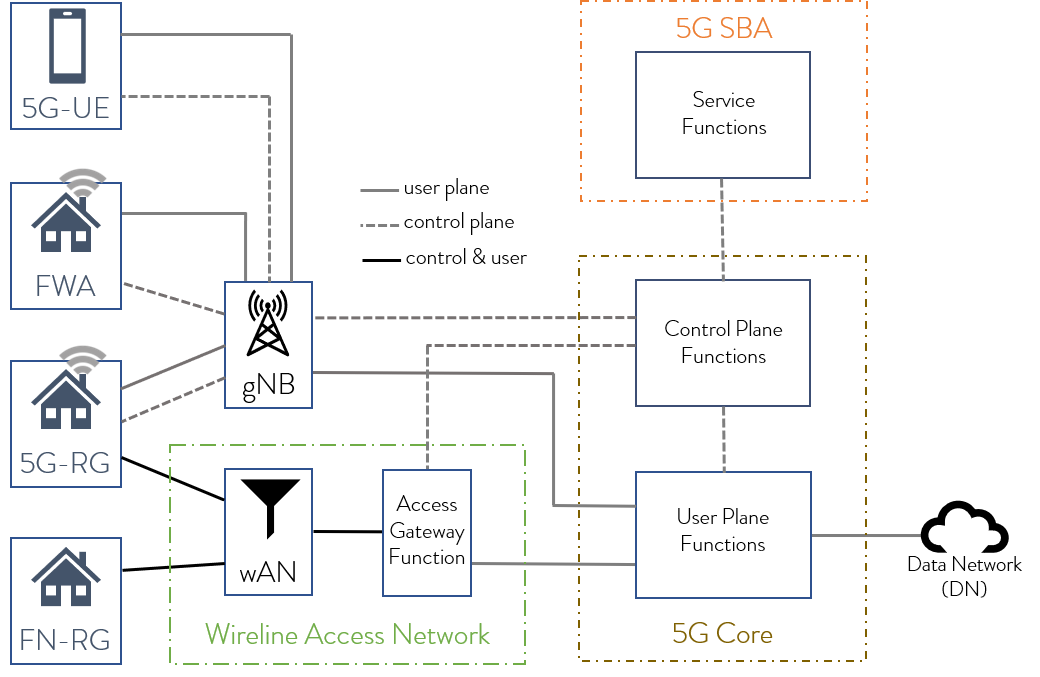Deutsche Telekom Achieves End-to-end Data Call on Converged Access using WWC standards
Wireline and wireless services are delivered today from two distinct technology implementations with separate network cores. 5G WWC standards offer a path to a fully converged broadband access network that integrates wireless and wireline operations on a common 5G Core.
Using these 5G Wireless Wireline Convergence (WWC) standards [1.] in an industry first proof-of-concept, Deutsche Telekom has validated in a lab trial the feasibility of converging the fixed network control plane into a 5G Core to steer traffic from a 5G residential gateway in its Bonn laboratory. The traffic was then routed along the entire wireline access chain to the core network.
Note 1. The GSMA’s 3rd Generation Partnership Project (3GPP), the Broadband Forum (BBF) and CableLabs have united to create technical reports and specifications defining the services and systems required to support 5G wireless and wireline convergence (5G WWC) architectures. Their resulting work is detailed within BBF’s TR-456 (Fixed Mobile Convergence / FMC) and CableLabs WR-TR-5WWC-ARCH and rolled-up within 3GPP Release 16 Technical Specification TS 23.316. The IETF have also been engaged in providing guidance around user plane protocol revisions while the IEEE, ITU-T SG15 and Metro Ethernet Forum (MEF) have been engaged with timing/synchronization requirements and other service specifications.

The Access Gateway Function (AGF) supporting wireless wireline convergence in a 5G Core
“Convergence will allow us to optimize our network assets and deliver new, differentiated service experiences to our customers regardless of the access used,” says Ahmed Hafez, VP Network Convergence, Deutsche Telekom. „Our tests prove the feasibility of the convergence architecture by controlling residential gateways in our fixed network from a common 5G Core.
It is critical now that the vendor ecosystem implements the standards into their product roadmaps, speeding up the time to market for end-to-end convergent solutions.”
The proof of concept was conducted on a trial system in Deutsche Telekom’s lab environment. For the 5G residential gateway, which provides the connection between the networked equipment within a home or small office to the 5G Core, a Deutsche Telekom developed prototype was used.
5G Core as common core:


